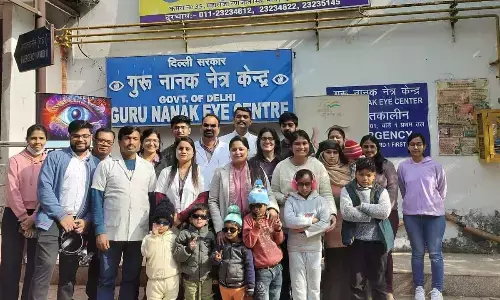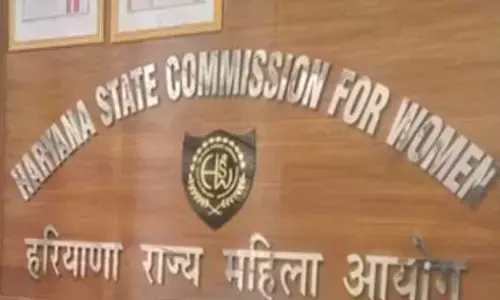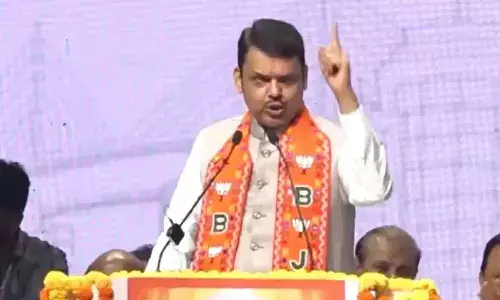175 years of faith and glory

Starting as a little chapel, St Mary’s church with her stupendous spiritual service and historical prominence was elevated to the status of Basilica – Now one of the ten Basilicas in India - by the former Pope Benedict the XVI in 2012.
Starting as a little chapel, St Mary’s church with her stupendous spiritual service and historical prominence was elevated to the status of Basilica – Now one of the ten Basilicas in India - by the former Pope Benedict the XVI in 2012.
On May 1, when the Basilica celebrates its Quarto Sept Centennial Celebrations a number of events like the blessing of a new and exquisite adoration chapel, a museum and a guest house – are crowded into the day’s celebration, presided over by the Apostolic Nuncio (Pope Francis Ambassador) to India and Nepal, His Excellency Most Rev. Salvatore Pennacchio.
The highlight of the great jubilee day will be the concelebration of the Pontifical High Mass by the Apostolic Nuncio, and by Most Rev. Arch Bishop Thumma Bala of Hyderabad and by the Most Rev. Arch Bishop Mallvarapu Prakash of Visakhapatnam, all the Catholic Bishops of Telangana and AP besides guest Bishops and 100s of priests and 1000s of devotees.
For 175 years St Mary’s Church has been a very popular and prominent place of worship, celebrating Christmas, Easter, The Feast of the Pentecost and many Marian festivals. The pilgrim statue of Our Lady of Fathima was brought to the church years ago when a miracle took place.
A Parsi lady was paralysed for years and she was taken to the statue in a wheelchair. She prayed and kissed the statue and miraculously she was able to stand up and walk.
August 15 is a doubly delightful and a dazzling day at St Mary’s Basilica. On that day, the church across the world exults in the Assumption of Mary, body and soul into heaven. It is the feast of Mother Mary’s liberation from bodily corruption and death and of her spiritual glorification.
That day we also celebrate Mother India’s Independence or liberation from foreign domination. The twin feast is naturally one of ecstasy and exultation and exaltation. Devout Christians with a prophetic orientation find in this doubly dear festival not just a coincidence but the hand of providence.
The foundation stone for St Mary’s Church was laid by the first Catholic Bishop at Hyderabad, Most Rev. Bishop Daniel Murphy on August 15, 1847, exactly a century before India’s Independence Day, and Bishop Daniel Murphy was from Ireland.
Daniel Murphy was ordained Bishop at the age of thirty like Jesus, who began his public ministry exactly at that age. The parallels between Mother Mary’s Assumption glorification and Mother India’s liberation inspire some devout and discerning Catholics into claiming Mother Mary’s affectionate concern for Mother India who hopefully one day will be glorified on the floor of the firmament, where Mother Mary will be reigning as the Queen of heaven and earth.
At the centre of the Assumption celebration in St Mary’s Basilica stands tall tower at the centre of which in a niche is the ever-serene statue of Mother Mary with her folded hands and upturned face, her eyes perennially staring into the sky at the highest.
She is obviously entranced by her triple glory as the divine - human ever immaculate Blessed Virgin Mother of Jesus with the unique relationship with the triune God, as the daughter of God the Father, as the mother of her Redeemer Son and as the spouse of God the Holy Spirit.
The statue inside the church shows Mother Mary in the humility and selflessness of ‘the hand-maid of God’. The pieta in front of the church with the lifeless body of crucified Jesus in her lap is an enigma of unbearable sadness along with unbounded joy as she reflects on the soon-to-be resurrection of her Saviour Son.
The spiritual aspect apart, St Mary’s Basilica has a political prominence. A unique history imposed itself on Bishop Murphy at St Mary’s. He defeated a decree of Lord Dalhousie, then Governor General (or Viceroy). In a case expelling the Bishop from St Mary’s his main church and from Secunderabad, his Head Quarters.
And the venue of his victory against the highest British authority in India was St Mary’s Church. Thus, the Church had a unique historic beginning and should be appropriately highlighted and honoured by the Government of India and by the Telangana State Government.
Even as St Mary’s Church was under construction, a feud erupted for its possession between the Catholics owing allegiance to the Pope and those governed by the Portuguese authority in Goa. According to St Mary’s Parish records, some soldiers of the Queen’s Regiment and the company’s artillery took part in the feud between the Irish and the Portuguese priests for the possession of the church while it was under construction.
A couple of Irish priests were accused of inciting the soldiers to violence from the pulpit. Bishop Murphy was held responsible for the violent words and acts of his priests and people.
The British military authority instituted an enquiry. Finally, the British authority at Fort St George, Madras, decided to expel Bishop Murphy and his priests from Secunderabad Cantonment. Accordingly, the Brigadier in command called upon the residents of Hyderabad General YS Fraser to deport them from the Nizam’s dominions.
Gen. Fraser hesitated to do this without explicit instruction from the Government of India to which he was immediately subordinate. The General felt that the British authorities at Madras were encroaching upon the spiritual field and that the British in India would be involved in ‘inextricable complications’. Gen. Fraser also wondered whether the Governor-General, Lord Dalhousie, would approve of “the very strange measure of removing Bishop Murphy and his priest from the Nizam territories.
So the General wanted to caution Lord Dalhousie “that we should not exercise any such interference that would involve and encourage a direct opposition and act of disobedience of that power which all Roman Catholics are bound to obey. Gen.
Fraser advised Lord Dalhousie to decide not only the reference to the intrinsic merits of the Madras resolution but also with some thought of the clamorous discussion which the enforcement of that resolution inevitably raised at home and perhaps throughout the Roman Catholic world.
Fraser cautioned that the Bishop’s summary and peremptory removal from his diocese will, “I imagine, be an act almost without a parallel in English history since reformation certainly since the revolution of 1688. It will assuredly attract much attention and I doubt it will be considered justifiable in the relative positions of the Protestant and Roman Catholic Churches, by any party in Church or State, unless some very strong and urgent reasons of which I have heard nothing can be advanced in favour of it.”
In his reply, Lord Dalhousie agreed that the removal of the bishop from the Nizam’s territories was a much more violent measure than the circumstances of the case would justify. Lord Dalhousie, however, felt that the Bishop should have exercised a “tighter reign over his subalterns.”
He declared that no one “can be permitted with impunity to incite men to commit an outrage against the law, or to interfere with military discipline.” He decreed “with regard to the present case, I have no doubt that the ecclesiastical authorities will recognise the necessity of moving the priests altogether away from Hyderabad, and spare the Government of India the disagreeable duty of taking steps compelling them to go.”
Thus, Bishop Murphy, though not expelled from his diocese, was forbidden from entering its principal town, Secunderabad, where his Cathedral, the leading schools and charitable institutions were situated. Bishop Murphy suffered this ban for two years and finally decided to seek a redressal.
Bishop Murphy left for London and he took with him the letter from General Fraser to the General’s old friend, Major Moore, who was in the Court of directors. General Fraser explained bishop Murphy’s case to Major Moore urging him to receive the Bishop “with the civility and kindness which are habitual to you.”
Fraser introduced the Bishop saying, “I have known him at least for ten years and a man of milder disposition and temper, and of more gentlemanly and unassuming deportment, I have never known in my life.”
The Court of Directors considered Bishop Murphy’s case and eventually instructed the British authorities in India to lift the military interdict on Bishop Murphy and his priests.
For the selfless, saintly Bishop Murphy, his victory meant one thing – that the hurdle to his mission was removed. He thanked God and returned from London and resumed the full exercise of his Episcopal functions.
Bishop Murphy’s victory over the British Governor General, Lord Dalhousie is definitely the first win in the country’s war of independence. For this historic achievement, St Mary’s church should be specially highlighted and honoured by the Government of India and by the Telangana and AP states.
By:Dr BF Showrayya
















